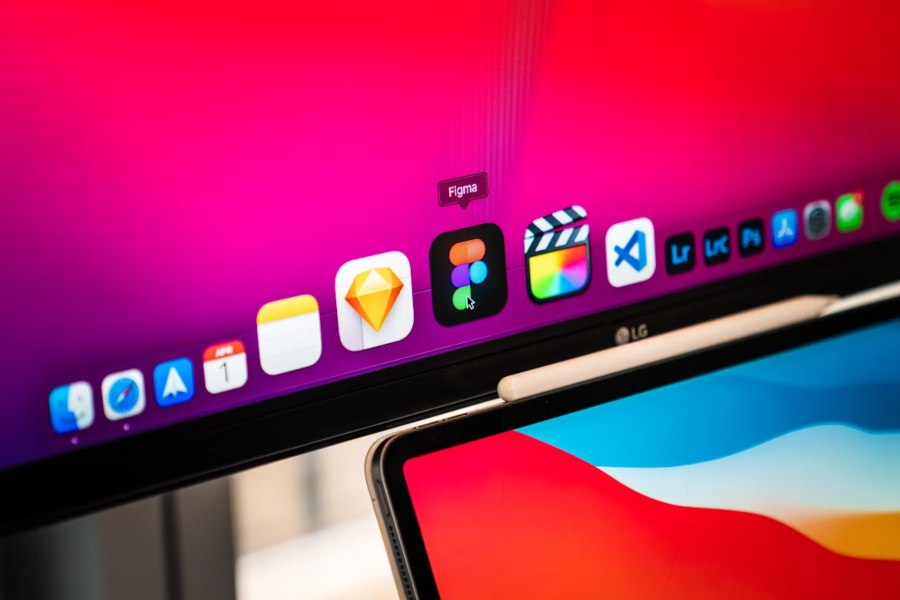Why Use Figma for Web Design? Streamline Your Workflow

When it comes to web design, selecting the right design tool is crucial to creating efficient, high-quality designs. One tool that has gained significant traction among web designers is Figma. Whether you’re a beginner or an experienced designer, Figma provides a seamless, collaborative environment to bring your web design ideas to life. But why use Figma for web design specifically? This tool has emerged as a favorite for many, thanks to its robust features like real-time collaboration, ease of use, and cloud-based accessibility.
In this article, we’ll explore the advantages of using Figma for web design, covering its unique features and how it helps streamline the design process, making it easier and more effective. Whether you’re designing websites for personal projects or professional clients, Figma offers the tools you need to create beautiful, functional designs.
Why use Figma for web design?
Figma is widely used for web design because of its user-friendly interface, real-time collaboration features, and cloud-based access. Designers can work together on the same project simultaneously, no matter their location, which streamlines the design process. Additionally, Figma’s vector-based design tools and seamless integration with other design software make it an excellent choice for creating responsive websites. Its flexibility, scalability, and ease of use make it an essential tool for both beginners and professionals in the web design industry.
Revolutionizing Collaboration in Web Design
Figma’s collaborative features stand out as one of the strongest reasons web designers choose the platform. Unlike traditional design tools that rely on file sharing and version control, Figma allows multiple team members to work on the same design in real-time. This eliminates the need for constant file exchanges, making the design process more efficient and less time-consuming.
The cloud-based nature of Figma enhances collaboration further, enabling team members to access the latest design versions from anywhere. This ensures that everyone, regardless of location, is working on the same page. This feature is especially beneficial for remote teams or those spread across different time zones. Additionally, Figma’s built-in version control allows users to track changes and easily revert to previous versions when necessary, ensuring a smooth design process.
With features like live commenting, real-time updates, and instant feedback, the platform enhances communication between designers, developers, and clients. This streamlined workflow makes Figma a key tool in modern web design projects, boosting efficiency and ensuring a more collaborative approach.
How Figma Enhances Collaboration in Web Design?
Collaboration is essential in web design, especially when working with teams or clients. Figma enhances the design process by offering a range of features that streamline communication and improve efficiency.
Real-Time Collaboration
One of the standout features of Figma is its real-time collaboration. Unlike traditional design tools, which require manual file sharing, Figma allows multiple designers to work on the same file at the same time. This feature is especially valuable when collaborating with clients or team members in different time zones, as it enables instant feedback and adjustments. With real-time collaboration, communication becomes more efficient, and the design process is streamlined, leading to quicker results.
Easy Feedback and Commenting
Figma makes feedback collection easy with its built-in commenting feature. Team members and clients can leave feedback directly on the design, reducing the need for lengthy email chains and ensuring all comments are centralized in one place. This feature simplifies communication, helping designers stay on track and make necessary changes quickly. With all feedback gathered in one spot, the iterative process becomes faster and more organized.
Version Control
Figma automatically saves every version of a design, allowing designers to track changes and revert to previous versions when necessary. This version control ensures that no essential changes are lost, giving designers the freedom to experiment without the fear of losing their work. It provides a safety net, making the design process more flexible and secure.
Essential Features of Figma for Web Design
Figma has a range of features that make it ideal for web design. These include:
- Cloud-Based Design: Figma’s cloud-based nature allows you to access your designs from anywhere, on any device, making it perfect for remote teams.
- Vector Editing: As a vector-based design tool, Figma is great for creating responsive designs that scale without losing quality.
- Prototyping: Figma’s interactive prototyping feature allows designers to create fully functional mockups to demonstrate how a website will work, which helps with usability testing.
- Design Systems: Figma allows designers to create reusable design systems that ensure consistency across all web pages.
These features collectively make Figma an essential tool for creating modern web designs that are both functional and aesthetically appealing.
Figma vs Other Web Design Tools
When choosing the right tool for web design, it’s essential to compare the features and capabilities of different platforms. Figma stands out as a versatile design tool, but how does it compare to other popular options like Adobe XD, Sketch, and InVision?
- Figma vs Adobe XD: Adobe XD is another popular web design tool, but Figma outshines it in terms of collaboration. While Adobe XD excels at prototyping and offers some collaborative features, it doesn’t match Figma’s real-time collaboration capabilities, which are essential for team-based work. Figma allows multiple team members to work on the same design simultaneously, streamlining the design process.
- Figma vs Sketch: Web designers widely use Sketch, but it lacks the cloud-based functionality that Figma offers. With Sketch, files must be shared manually, which can lead to version control issues. In contrast, Figma’s cloud-based platform allows for real-time updates and feedback from any location. Additionally, Figma is cross-platform, meaning it works on both Windows and macOS, while Sketch is available only on macOS.
- Figma vs InVision: InVision is great for prototyping, but lacks the robust design capabilities of Figma. Figma combines both design and prototyping in one platform, making it a more comprehensive tool for web design. If you’re tracking your project timelines or estimating design completion, you can even use tools like a Date Time Calculator to track progress more efficiently.
How to Get Started with Figma for Web Design?
Getting started with Figma for web design is simple and rewarding, thanks to its user-friendly interface and powerful design tools. Here’s a step-by-step guide to help you get up and running with Figma.
Setting Up Figma
To get started with Figma, simply sign up for a free account on their website. Once you’ve logged in, you can begin creating a new design file. Figma offers a variety of templates for web design, allowing you to either start with a pre-built structure or create a design from scratch. This flexibility makes it easy for both beginners and experienced designers to dive right into the tool.
Learning the Interface
Figma has a clean, intuitive interface that is easy to navigate. The design tools, including drawing, text editing, and prototyping, are clearly labeled and organized for quick access. Take some time to familiarize yourself with the tools and panels to maximize your efficiency. As you get comfortable, you’ll find that Figma’s interface is designed to help you work smoothly and effectively on web design projects.
Creating Your First Web Design
Start by creating wireframes for your website, followed by mockups and interactive prototypes. Figma’s versatile features allow you to design different page layouts and test interactions quickly. You can adjust and tweak your design in real time, ensuring it functions as intended before moving into the development stage.
In Summery
Figma has established itself as one of the best tools for web design due to its collaboration features, ease of use, and comprehensive design tools. Whether you’re working solo or as part of a team, Figma helps streamline the design process and makes creating beautiful, functional websites easier. Its ability to combine design, prototyping, and collaboration in one platform makes it a top choice for modern web designers.
FAQ’s
What is Figma, and why is it popular for web design?
Figma is a cloud-based design tool that enables real-time collaboration, vector editing, prototyping, and more, making it ideal for web design projects.
How does Figma help with collaboration in web design?
Figma allows multiple users to work on a design simultaneously, providing instant feedback and ensuring a seamless design process.
Can Figma be used for prototyping?
Yes, Figma offers interactive prototyping features that allow designers to create clickable mockups to test and visualize user interactions.
Is Figma free?
Figma offers a free version with essential features. For more advanced functionalities and larger teams, they provide paid plans.
How does Figma compare to Adobe XD?
Figma excels in real-time collaboration and cloud-based functionality, while Adobe XD is more focused on design and prototyping without the same collaborative features.
